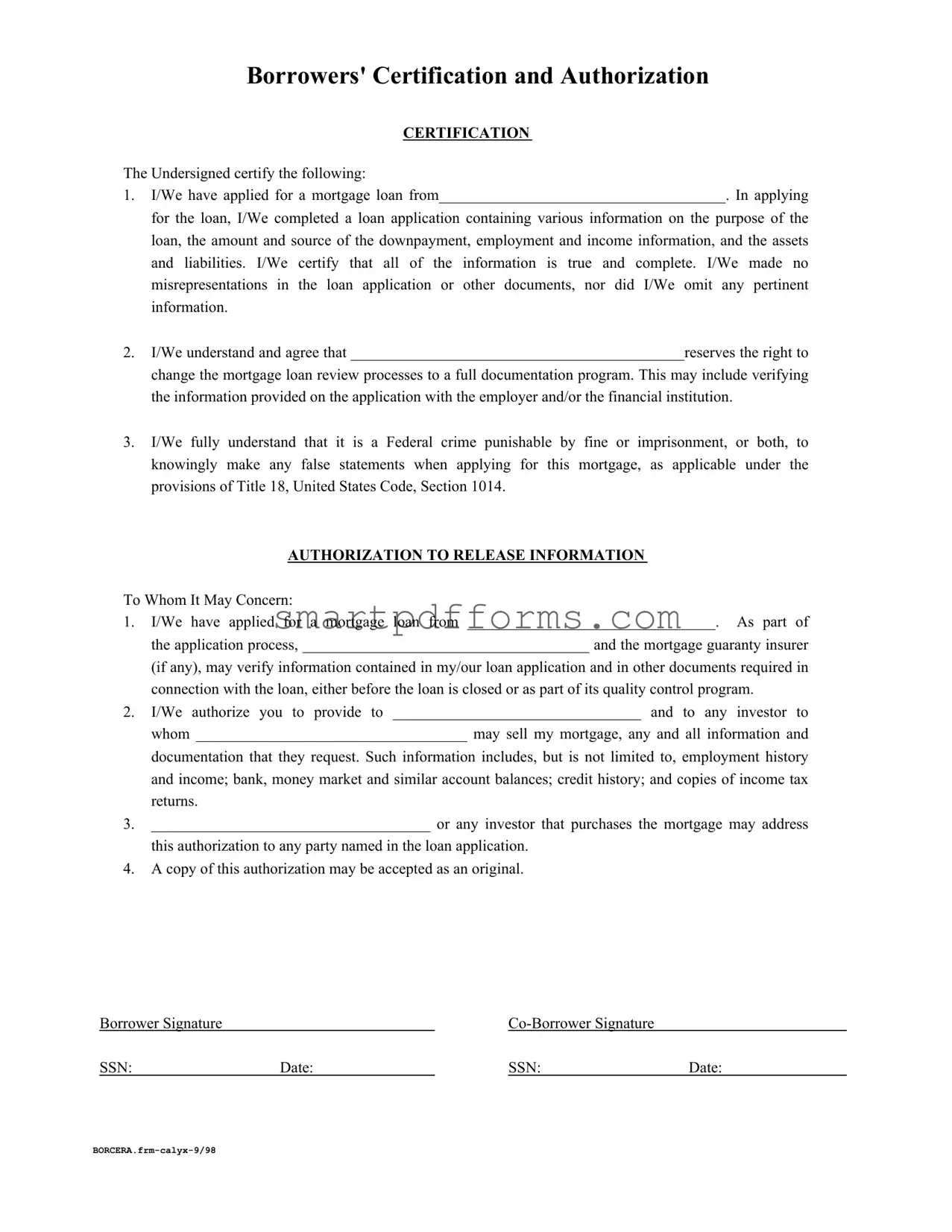BORROWERS' CERTIFICATION AND AUTHORIZATION
CERTIFICATION
The Undersigned certify the following:
1.I/We have applied for a mortgage loan from_____________________________________. In applying for the loan, I/We completed a loan application containing various information on the purpose of the loan, the amount and source of the downpayment, employment and income information, and the assets and liabilities. I/We certify that all of the information is true and complete. I/We made no misrepresentations in the loan application or other documents, nor did I/We omit any pertinent information.
2.I/We understand and agree that ___________________________________________reserves the right to change the mortgage loan review processes to a full documentation program. This may include verifying the information provided on the application with the employer and/or the financial institution.
3.I/We fully understand that it is a Federal crime punishable by fine or imprisonment, or both, to knowingly make any false statements when applying for this mortgage, as applicable under the provisions of Title 18, United States Code, Section 1014.
AUTHORIZATION TO RELEASE INFORMATION
To Whom It May Concern:
1.I/We have applied for a mortgage loan from ________________________________. As part of the application process, _____________________________________ and the mortgage guaranty insurer (if any), may verify information contained in my/our loan application and in other documents required in connection with the loan, either before the loan is closed or as part of its quality control program.
2.I/We authorize you to provide to ________________________________ and to any investor to whom ___________________________________ may sell my mortgage, any and all information and documentation that they request. Such information includes, but is not limited to, employment history and income; bank, money market and similar account balances; credit history; and copies of income tax returns.
3.____________________________________ or any investor that purchases the mortgage may address this authorization to any party named in the loan application.
4.A copy of this authorization may be accepted as an original.
Borrower Signature |
|
|
Co-Borrower Signature |
|
SSN: |
Date: |
|
SSN: |
Date: |
